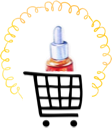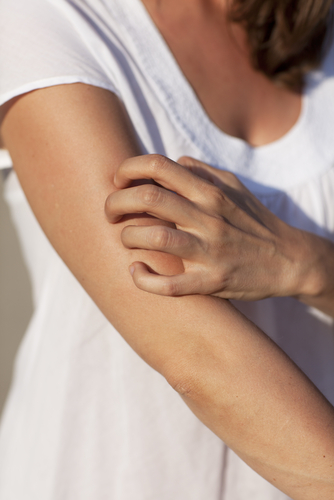Today sees the return of my Skin Allergy Snapshot series, and to mark the occasion I wanted to draw attention to a complaint many women suffer from but few talk about.
More of a condition than an allergy, Keratosis Pilaris affects an estimated 40% of adults and 50-80% of adolescents, and is thought to be hereditary.
The small, goose bump-like red or white marks most commonly appear on the outer sides of the upper arm, but can appear anywhere on the body excluding the palms and soles of the feet.
As the condition is rarely itchy or irritated, Keratosis Pilaris is more of a confidence-killer than health issue, and many self-conscience sufferers often cover affected areas to avoid embarrassment.
What is Keratosis Pilaris?
There are actually several variations of Keratosis Pilaris, the main three being:
1. Keratosis Pilaris Rubra – red, inflamed bumps.
2. Keratosis Pilaris Alba – dry, rough, bumpy skin with no irritation
3. Keratosis Pilaris Rubra Faceii – red rash on the cheeks.
The bumps themselves are caused by an excess of keratin, a naturally occurring protein, in the body which builds up in the hair follicles.
When combined with dead skin cells, this keratin clogs the follicles and creates tiny raised bumps on the skin.
While usually white (the colour of keratin), the bumps can appear red when hair is entrapped within the follicle, or in winter months when the air is drier and tight-fitting clothes rub against the skin.
Unfortunately, like a lot of skin conditions there is no known cure for Keratosis Pilaris, however there are things that can be done to improve its appearance.
While many cite various chemical treatments as beneficial, we organic advocates would obviously suggest more natural holistic remedies.
The most important thing to do is exfoliate, which will get rid of the keratin-filled bumps and even out the skin’s surface.
A natural loofah will do the trick, or for a DIY alternative try mixing up a fine grain oatmeal and Manuka Honey blend.
Manuka has strong anti-bacterial and anti-inflammatory properties which will help the skin to heal and calm any redness or aggravation.
Always opt for a Manuka with a high ‘UMF’ (Unique Manuka Factor) – the higher the number the more active and anti-microbial the honey is.
Always follow up your exfoliating with a good moisturiser.
Bursting with even more anti-inflammatories, our Comfrey & Calendula Calming Body Cream is a soothing and intensely hydrating organic skin tonic.
Our Rosehip BioRegenerate Oil may also prove effective, as its high concentration of regenerative sterols will encourage cell turnover – preventing dead skin cells from building up and creating those bumps in the first place.
Try adding a few drops of the Rosehip BioRegenerate Oil to your Body Cream before applying for an extra skin regenerative boost!


